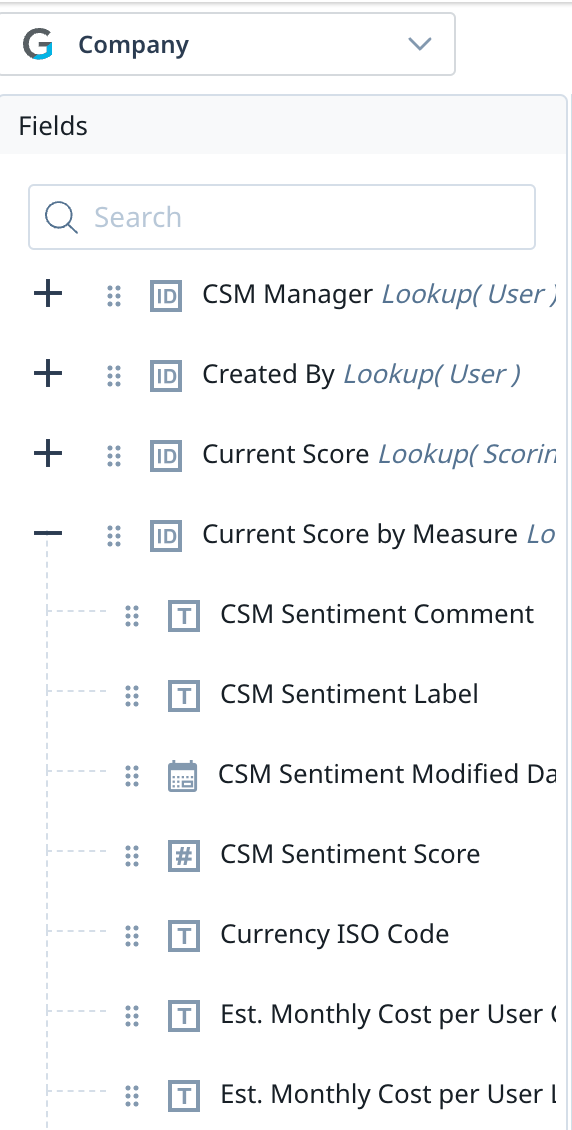Have you ever heard this from the business?
- Can you add the CSM Sentiment score to the My Portfolio widget on GS Home?
- Can you add the Product Usage score to this renewal opportunities report?
- Can you add the CSM Sentiment comments to the current quarter renewals report?
Seeing scorecard data in non-scorecard object based reports is a very common request, but not a straight forward thing to build in Gainsight! I wanted to share how I accomplished this for us at Amplitude and how we’ve been able to incorporate scorecard throughout our Gainsight reporting as a result.
Step 1: Create a custom low volume object to hold your score details
- I called mine “Current Score by Measure”
- It includes fields for Score (# data type), Label (String), Comments (String), and Last Modified (Date) of all the scorecard measures we have
- There’s also a Company GSID field to hold the account ID of the current score by measure data
Step 2: Create a rule to load to your Current Score by Measure object
-
Fetch current scorecard measure labels, scores, comments, and modified dates for accounts
-
Transform the comments from Rich Text into String
-
Pivot on the scorecard measure name and MAX the Score, Label, Comment, and Last Modified so we turn our dataset from multiple records per Company into 1 record per Company
-
Load the records into the custom object
Here’s what my Pivot looks like (at a glance -- there are many pivot steps included here not shown in the screenshot)

Step 4: Add a lookup field to the Company object for your Current Score by Measure object (Current Score by Measure:GSID)
Step 5: Create a rule to load the Current Score by Measure record GSID to the new Company field created in Step 4
This will help the field know what record to reference on your Current Score by Measure object
Fetch from Current Score by Measure object, load the Current Score by Measure record GSID to Company
When you’re done, it should look like this!

Now you can grab these key fields directly from your Company object. We run our rules for these nightly. Now, these types of fields are standard on reports we do from Company object, just like ARR...Name...Renewal Date...we always include some specific Scorecard measure fields as well!
Note: I can’t recall what the maximum number of pivots you can do in a Pivot task. We’re up to over 30 and still doing OK though!

